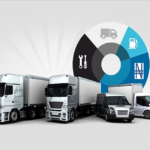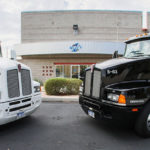
Increased Loss Recoveries:
It takes time and effort, but effective recovery of repair and other related expenses from third-party drivers significantly reduces the net cost of fleet accidents. Fleets that collect every naira they’re due from accidents caused by non-fleet drivers can offset repair expenses by as much as 20% to 25%.
Preventing Accidents:
Taking into consideration the cost of repairs alone, preventing an accident saves more money than spending less on repairs and recovering damages for some fraction of annual accidents.
The savings are much greater, however, when you consider the real costs to a fleet sponsor that go beyond repairs and rentals.
The Hidden Costs Dimension:
These so-called “hidden” costs of fleet accidents don’t appear on a fleet’s books, but are nonetheless real, costing the organization through lost productivity, medical expenses, workman’s compensation claims, and administrative expenses. For accidents with serious injury or fatalities, add in legal costs and liability.
In the United States of America for example, the Network of Employers for Transportation Safety estimates that the sum total of all business costs for the average accident is nearly $16,600, while for one involving an injury, it’s $76,300 and for one involving a fatality more than $504,000!
Sophisticated in-vehicle crash-avoidance technology is designed to compensate for driver error and, in some cases, take control of the vehicle to avert an accident. While adoption of this technology is not yet widespread, driver monitoring and risk assessment systems have already been proven to prevent fleet accidents and reduce accident rates by as much as 35%.
These systems work by delivering timely and widely publicized consequences for poor driving behaviour. They create files for every fleet driver that contain data that describes their driving performance. In this part of the world, the sources are typically resource data such as hash-breaking, overspeeding and other violation report from on-board integrated fleet management systems, bookings received from traffic agencies for road ethics violation etc.
However, in places like the US, other readily available driving monitoring and risk assessment systems include state motor vehicle records (MVRs) and accident history, traffic camera violations and information from toll-free driver reporting services. The files are updated as new data is received, and each event is assigned a point value. Drivers are then sorted into ascending risk categories.
Whenever an event moves them to a higher risk category, they are immediately sent an email letting them know that their risk status has changed, are assigned remedial training, or are subject to other sanctions. At the same time, depending on the severity of the most recent event and protocols established in cooperation with the fleet, the fleet department, the driver’s manager, and the safety, HR and legal departments are also notified.
The result is a virtual safety committee that meets not monthly, quarterly or annually and is burdened with paper, but one that harnesses the power of current information technology. It’s on duty 24/7/365 and provides actionable data soon after events occur regardless of the driver’s status within the organization. As a result, knowing that their driving performance no longer flies under management’s radar, drivers change their driving behaviour for the better, in a phenomenon known as the “Hawthorne effect” – meaning that when drivers’ performance is closely monitored and measured, and they know that management expects better performance, they improve their performance.
FOR PART ONE, CLICK: FLEET FOR PROFIT: PREVENT ACCIDENTS, REDUCE REPAIR EXPENSES – PART ONE







